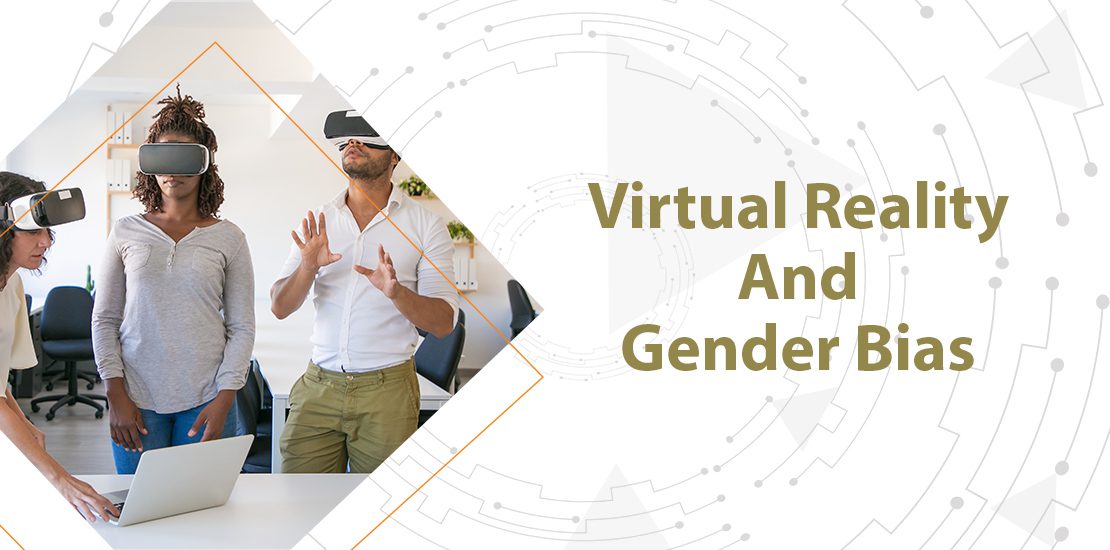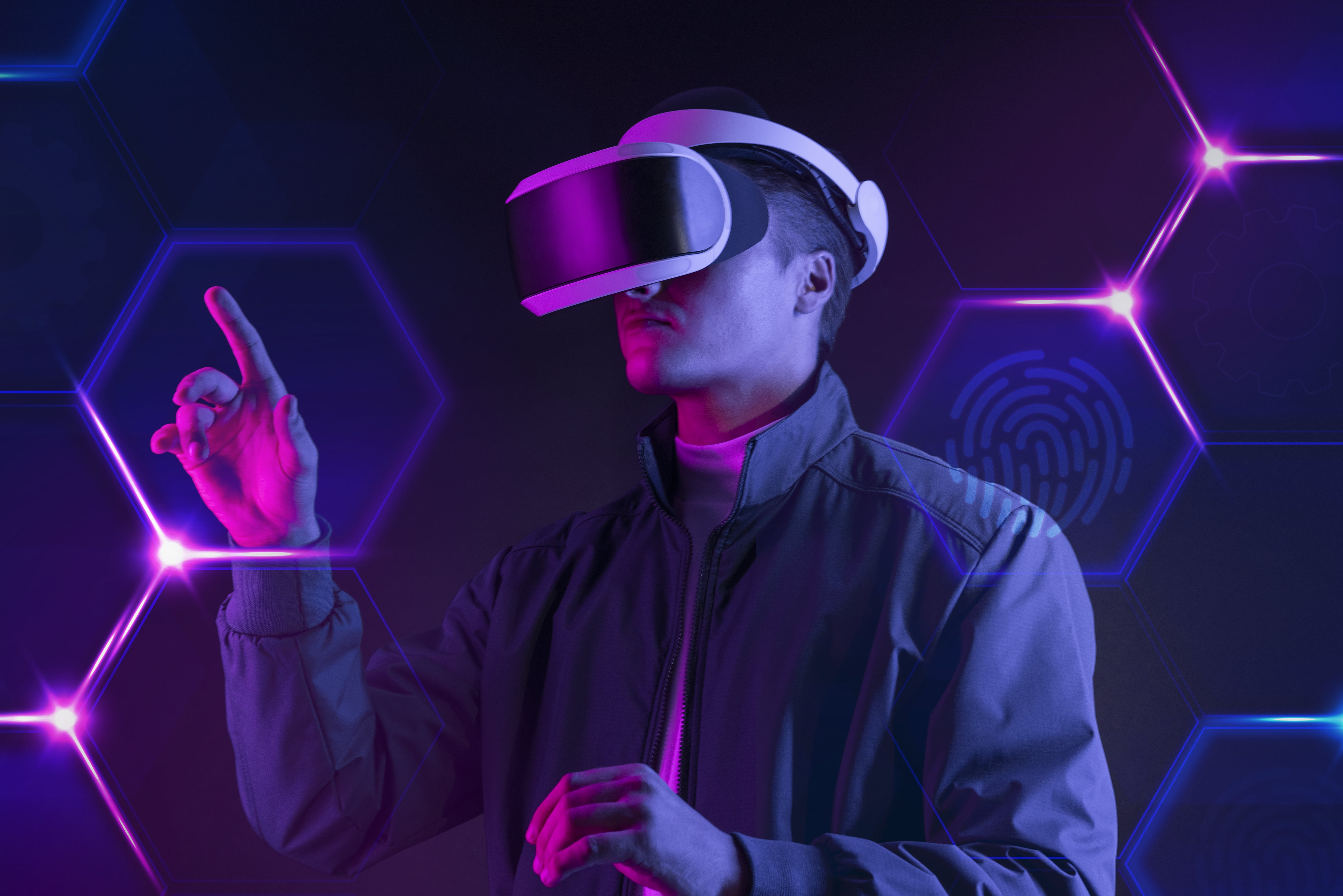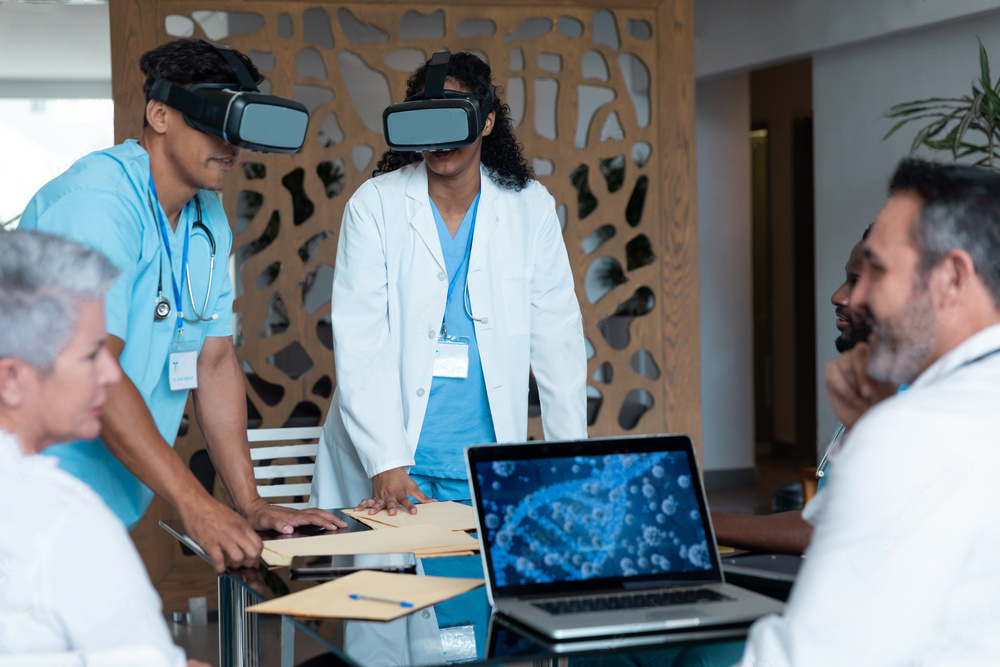March 10th, 2022
Category: ar vr
No Comments
Posted by: Team TA

Synopsis
Virtual Reality is becoming more popular, and people are starting to adopt it in their daily lives. As the technology is becoming more and more mainstream, the existence of a gender imbalance in VR simulator sickness susceptibility has sparked fresh poles of debate on the matter. With one half of the population having a different VR experience than the other, this article explores virtual reality and gender bias space and how to address them.
“Imagine enjoying a courtside seat at a game, studying in a classroom of students and teachers all over the world, or consulting with a doctor face-to-face — just by putting on goggles in your home.”
-Mark Zuckerberg
So, what is this miracle technology? and how does it work? Let’s explore VR in detail.
What is Virtual Reality technology?
Hailed as the technology of the future, Virtual Reality is pretty much the hot topic of conversation almost everywhere. In layman’s terms, Virtual Reality is a three-dimensional computer-generated environment with realistic scenes and objects that can be explored and interacted with by a person using headsets or appropriate devices. Very comparable to those seen in sci-fi movies like the Minority Report or Matrix, for example.

Virtual Reality builds a virtual world in which people may interact with computers in the same manner they do in real life. Users can enter and move through the virtual terrain, as well as interact with virtual items, with a stereoscopic view from the front or side depending on the user’s viewpoint, just like in the real world.
But what does all this mean?
How does VR technology work?
First and foremost, Virtual Reality is a program, a piece of software that you can use with VR glasses or other dedicated VR equipment. The main concept is to create a 3D image that is similar to how we perceive the real world through our eyes. The content that the glass may transmit ranges anything from a movie to a trip to the Taj Mahal.
Using computer vision and advanced graphics, VR technology aims to regenerate computer images and videos to produce a realistic visual experience. VR isn’t only about the visuals; it’s also about the noises and movement of the gadget. Controllers, gloves, and other instruments that the user physically engage with or touch. For complete immersion, for the sensation of being inside the digital world and the depth to which that sensation is felt, smell, touch, and further movement may be included.
The basis of a really good VR experience comes with a headset. Virtual Reality headset (VR headset) is a head-mounted display (HMD) that blocks out the outside world and shows the user a 3D world or stitched images to create a simulation. After putting on the VR headset, the user will feel like being in the scene and interacting with it.
VR headsets block off the outside world and present a whole new view for the user. In many cases, the screen is set to focus to fill the user’s entire peripheral vision and block out the outside world. For the time being, one can enjoy Virtual Reality on a PC, smartphone, or gaming console using Virtual Reality headsets such as Samsung Gear VR, HoloLens, Oculus Rift, etc.
Virtual Reality produces a major share of content worldwide and has practical applications in various industries. According to ARtillery ‘s Intelligence study, Virtual Reality is anticipated to earn 6.7 billion in revenue by 2024 and reach 84.09 billion by 2028.
With disruptions at this rate, there is little doubt that we will be spending a lot more time in the Virtual Reality environment.
Gender bias in Virtual Reality: Is VR a double-edged sword for women?
- With Virtual Reality anticipated to fill the enterprise roles from training to data visualization, a growing body of research suggests that men and women experience Virtual Reality differently. According to research, women process VR sensory immersion differently than men on a biological basis. When it comes to the human body, there are a lot of fundamental variances, hormonal differences, and perception differences that must be accounted for during the immersion development process.
- One of the greatest roadblocks to widespread VR adoption is the phenomenon of simulator sickness. Simply put, too many people experience sickness and disorientation when they first try virtual reality. It’s the industry’s version of motion sickness, and it’s been an issue since the beginning. To try to remedy it, developers have spent a long time refining technical concerns like resolution and latency. Along the way, they discovered another strange complication that women were sicker than men.
- Danah Boyd, a well-known researcher and media scholar, presented the results of her own scientific tests on the subject. Her findings, indicating genuine biological sex characteristics affect perception in virtual reality, were presented in the widely read and purposefully controversial essay “Is the Oculus Rift sexist?” The claim is that systems such as the Oculus Rift, which were mostly built by men, accidentally discriminate against women.
- A new study appears to support this. Thomas Stoffregen, a professor of kinesiology at the University of Minnesota, is now conducting research in this field, specifically testing using the Oculus Rift. So far, the results are somewhat concerning. “We got our hands on an Oculus Rift and brought it down to the lab,” Stoffregen explained. “Women were more than twice as likely as men to become ill in Virtual Reality than males.”
- There are numerous possible explanations for this, according to Stoffregen. For one reason, past studies have shown that motion sickness is more common in women than in males, whether in the virtual or real world. But, more crucially, Virtual Reality systems must be precisely tuned in order to simulate the impression of true presence in a virtual world.
- For the most basic of reasons, a system designed by men may feel odd to women. “It’s just plain old sexual dimorphism,” Stoffregen explained. “Men are taller than women, while women are shorter. In general, women have a lower center of mass than men. Those two fundamental variations in physical shape are critical.” Other factors may also be at play such as motion parallax, luminescence cues, shape-from-shading, and sense of presence.
- Rebecca Hite, an assistant professor of STEM education at Texas Tech University, who specializes in educational VR, suggests there are cognitive disparities between how men and women learn in virtual reality, such as, rotating an object in 3D space. While both men and women are able to understand and learn in virtual environments, there are statistically significant differences in how males and females process spatial information.
- There is a body of research suggesting that women have poorer spatial ability than men. However, when partitioning spatial memory from spatial ability, other studies have shown that women fared better than men, suggesting spatial processing may be genetically, perhaps evolutionarily, different between the sexes.
- While there is no agreement on what causes these gender differences in VR, there is now widespread agreement that they exist. The gender differences could become more prominent as virtual environments are increasingly used for training, learning, and other purposes. With that being the case, persons who are unable to endure VR-based systems may be excluded from learning and development opportunities as these technologies advance.
- Furthermore, we cannot leave those who are susceptible to cybersickness on the sidelines to those who can handle VR exposure advance due to better, more immersive training, more effective jobs aided by real-time guidance, that emerge from a fusion of digital and physical worlds, watching this new era of VR-enabled productivity pass them by.
Closing the gender gap: How can VR technology be used to reduce gender bias?

Bias in general, and gender bias in particular, contributes to social inequalities by encouraging people to favor their own group at the expense of others. To promote equality, we need to learn to understand each other’s realities. Virtual Reality technology can move the conversation forward in gender equality, gender roles, stereotypes and diversity. VR can aid in the development of higher degrees of empathy in specific situations, which helps lessen unconscious prejudice. Recent research suggests that VR presents powerful chances to view the world from the perspective of someone other than us by reflecting and illuminating features of other people’s experiences.
The technology can be used to help people overcome homophobia, improving people’s perceptions about LGBTQ individuals. A social experiment was undertaken by VeeR VR, a big VR/360 company in Beijing, to increase empathy for LGBTQ persons. People were able to see everything because of the 360° functionality. People were able to experience the experiment from both the perspective of the LGBTQ person and the perspective of other participants.
VR applications can improve gender equality through simulating scenarios. Y&R New York, a marketing business, just released a new software that produces virtual sculptures of prominent women throughout the city. The project is a call to action for developers all over the world to create monuments of pioneering women in their own cities in support of the UN’s Sustainable Development Goals to achieve gender equality.
Virtual Reality has the incredible opportunity to change real-world experiences and showcase diversities to shape our moral fabric and culture, let’s harness it for good.
Final thoughts
Virtual Reality is a parallel universe that mixes elements of the virtual world into our perceptions of the real world, thus enhancing what we see, hear and feel. These technologies might prove fruitful in promoting gender equality by reducing implicit bias and increasing empathy, as well as visualizing what an equal world might look like. Many women are entering the VR scene, actually bringing a woman’s perspective to VR in order to create a more egalitarian virtual world from the ground up. This new wave of Virtual Reality development is commonly recognized as one of the more diverse sectors in technology’s predominantly male-dominated world.
Viola, you’ve made it all the way to the end of this article.
We know you have a lot of questions about AR/VR technologies on Metaverse, for you we’ve uncovered everything there is to know about XR technologies in our numerous blogs and insights.
Get in there and read ’em all at Our Blogs cheers!
Virtual Reality is about to upend your life in a manner that nothing else has since the smartphone revolution, so what are you waiting for?
We are VR experts!